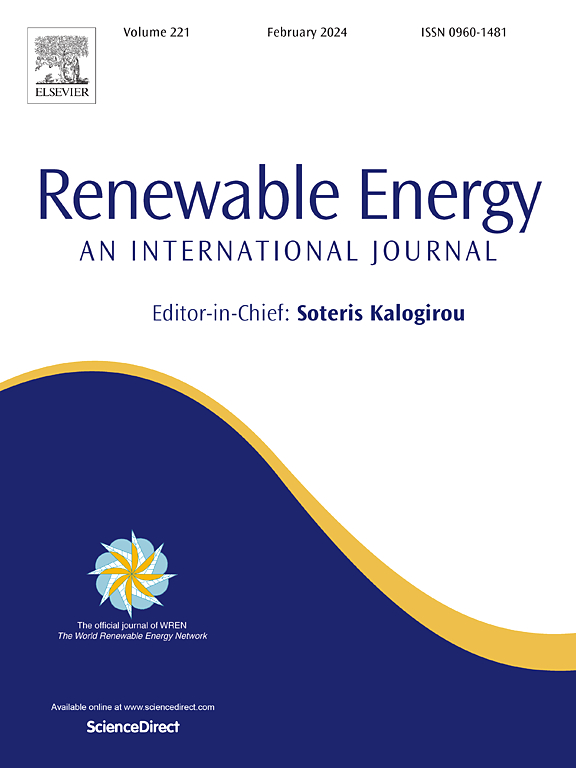Adaptive optimization of wave energy conversion in oscillatory wave surge converters via SPH simulation and deep reinforcement learning
IF 9
1区 工程技术
Q1 ENERGY & FUELS
引用次数: 0
Abstract
The nonlinear damping characteristics of the oscillating wave surge converter (OWSC) significantly impact the performance of the power take-off system. This study presents a framework by integrating deep reinforcement learning (DRL) with numerical simulations of OWSC to identify optimal adaptive damping policy under varying wave conditions, thereby enhancing wave energy harvesting efficiency. The open-source multiphysics library SPHinXsys establishes the numerical environment for wave interaction with OWSCs. Subsequently, a comparative analysis of three DRL algorithms is conducted using the two-dimensional (2D) numerical study of OWSC interacting with regular waves. The results reveal that artificial neural networks capture the nonlinear characteristics of wave–structure interactions and provide efficient PTO policies. Notably, the soft actor–critic algorithm demonstrates exceptional robustness and accuracy, achieving a 10.61% improvement in wave energy harvesting. Furthermore, policies trained in a 2D environment are successfully applied to the three-dimensional study, with an improvement of 22.54% in energy harvesting. The optimization effect becomes more significant with longer wave periods under regular waves with consistent wave height. Additionally, the study shows that energy harvesting is improved by 6.42% for complex irregular waves. However, for the complex dual OWSC system, optimizing the damping characteristics alone is insufficient to enhance energy harvesting.
求助全文
约1分钟内获得全文
求助全文
来源期刊

Renewable Energy
工程技术-能源与燃料
CiteScore
18.40
自引率
9.20%
发文量
1955
审稿时长
6.6 months
期刊介绍:
Renewable Energy journal is dedicated to advancing knowledge and disseminating insights on various topics and technologies within renewable energy systems and components. Our mission is to support researchers, engineers, economists, manufacturers, NGOs, associations, and societies in staying updated on new developments in their respective fields and applying alternative energy solutions to current practices.
As an international, multidisciplinary journal in renewable energy engineering and research, we strive to be a premier peer-reviewed platform and a trusted source of original research and reviews in the field of renewable energy. Join us in our endeavor to drive innovation and progress in sustainable energy solutions.
 求助内容:
求助内容: 应助结果提醒方式:
应助结果提醒方式:


